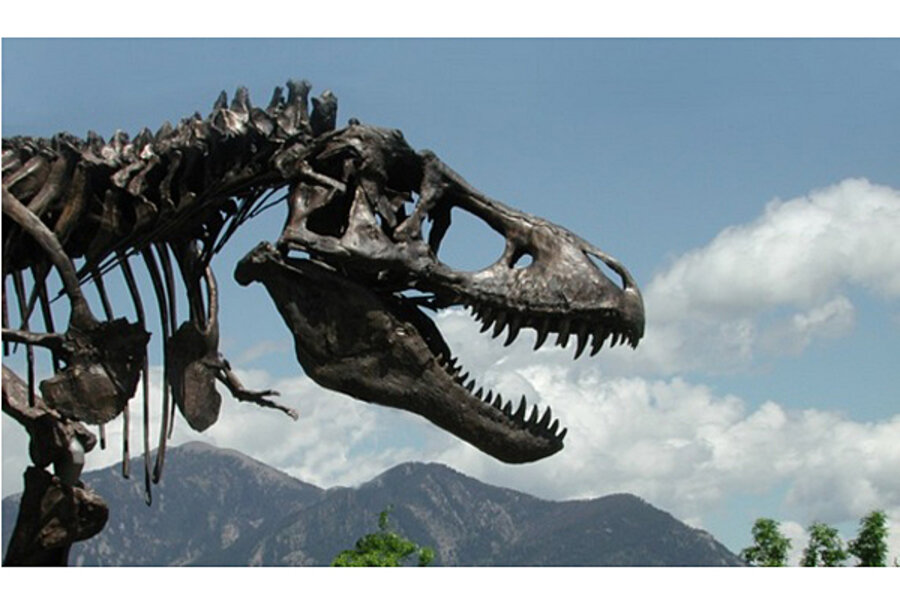Government shutdown stops T. rex from coming to Washington
Loading...
The ongoing government shutdown has stalled plans to haul a near-complete T. rex fossil to its new home at the Smithsonian National Museum of Natural History, a federal institution forced to shut its doors last week.
The T. rex was set to leave its current home in Montana on Friday (Oct. 11) for a cross-country road trip. As part of a new loan agreement, the Smithsonian, the world's most visited natural history museum, will be the dinosaur's steward for the next 50 years.
But Smithsonian magazine, the official journal of the institution, reported that the T. rex transfer has now been postponed until April. [See Images of the T. Rex Fossil]
"It's a major specimen, so we're being very prudent about how we handle it," Kirk Johnson, the museum's director, told Smithsonian magazine. "There's a lot of uncertainty with the shutdown, and uncertain availability of federal workers to do the work that we need to do."
The fossil's planned arrival at the Smithsonian on Oct. 16 was meant to coincide with the fourth annual National Fossil Day. The museum typically receives 7.3 million visitors per year, according to its website. It is closed in the wake of the shutdown, and most of its staff has been furloughed.
The dinosaur has been dubbed the Wankel T. rex after Kathy Wankel, a rancher and amateur fossil hunter who discovered its arm bones in Montana's Fort Peck reservoir in 1988. Since it was unearthed on federal lands, the dinosaur belongs to the U.S. Army Corps of Engineers. That agency had loaned the fossil to the Museum of the Rockies at Montana State University in Bozeman, where it was prepared and put on display in its original "death pose" for two decades.
The T. rex, which measures 38 feet (11.5 meters) long and weighs 7 tons (6.3 tonnes), will be the centerpiece of the Smithsonian's new dinosaur hall, scheduled to open in 2019. The new wing will feature other key specimens from the Smithsonian's collection of 46 million fossils.
T. rex lived in North America some 68 million to 66 million years ago. It was one of the largest known carnivorous dinosaurs and one of the last non-avian dinosaurs to roam Earth before to the Cretaceous-Paleogene extinction event. Fossil hunter Barnum Brown discovered the first T. rex bones in Montana in 1902 at the Hell Creek Formation, the same rock formation where the Wankel specimen was found.
Follow Megan Gannon on Twitter and Google+. Follow us @livescience, Facebook & Google+. Original article on LiveScience.
- 15 Weirdest Effects of the Government Shutdown
- Dinosaur Detective: Find Out What You Really Know
- Image Gallery: The Life of T. Rex
Copyright 2013 LiveScience, a TechMediaNetwork company. All rights reserved. This material may not be published, broadcast, rewritten or redistributed.





